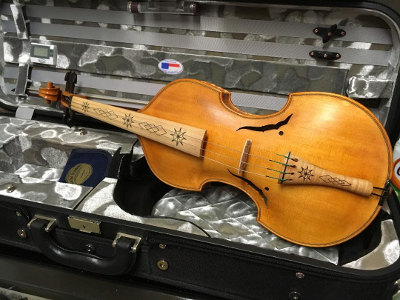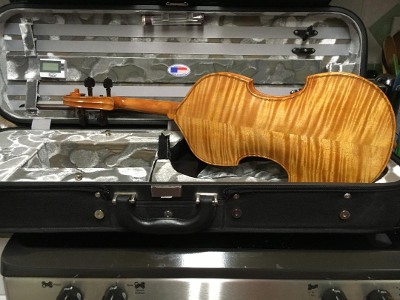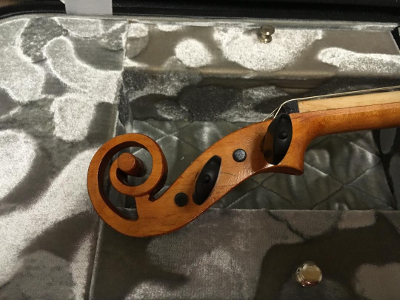
Baltimore Recorders.org
About the Baroque Violin
Some of the most valuable violins in existence, such as the Molitor Stradivarius, the Lord Wilton Guarnerius, and Il Cannone Guarnerius date back to the Baroque era. Many have survived in very good physical condition and are still be played today by some of the most talented violinists of our age. However, most of these instruments have been changed over the centuries. Thus, although the body of the violin dates back to the Baroque era, the fingerboard, bridge, neck, bass bar, and strings have changed or been reset.
The term Baroque violin was popularized in the 20th century to differentiate instruments that have modern features from those that have Baroque ones. I will begin by saying that there is no single typical Baroque violin. There was a great amount of variation in the design of violins during the Baroque, as the instrument was evolving quickly. This being said, there are still features that are common on baroque violins that are not common on modern ones.
One differentiating feature that is relatively obvious upon casual inspection is the length of the fingerboard. Baroque violins typically had fingerboards that do not extend as far down the body as modern instruments. The latter measure approximately 270 mm, while baroque ones are in the realm of 200 mm.
Another obvious difference is the material that is used in the fingerboard and tailpiece. Ebony was uncommon in Europe during the Baroque era. Thus it was rare that a violin would have a solid ebony fingerboard and tailpiece like a modern instrument. Instead the fingerboard and tailpiece were commonly made of maple. A veneer of ebony was sometimes applied to the surface of the fingerboard. Baroque instruments sometimes had decorative inlays on the fingerboard and tailpiece.
The fingerboards of Baroque instruments varied in their radius. Some fingerboards have a larger radius than the 42 mm that is now typical. This facilitated double and triple stops.
The necks of modern violins slope down toward the floor at an angle of approximately 7 to 8 degrees. In the Baroque era, it is thought that the typical violin neck was closer to being parallel to the body, sloping back not more than 4 degrees. The neck angle was so small that the fingerboard on most baroque instruments is wedge shaped. Thus, as one moved their hand up the fingerboard the neck and fingerboard had a wider girth. As you can imagine this has a significant effect on playing the instrument.
In addition to their angle, necks on earlier Baroque and Renaissance violins tended to be shorter than their modern equivalents. However, Stradivarius' necks on forms P and G were only 1 mm shorter than the now standard 130 mm length. Lastly, the neck on Baroque instruments was typically attached by a nail rather than being mortised into the body.
In 1734 the total string tension was recorded as being the equivalent of 63 pounds by Giuseppe Tartini. In contrast, modern string tension is approximately 50 pounds. It is thought that the higher tension was supported by a thicker top to the instrument. The slightly shallower angle of the strings crossing the bridge would also decrease the pressure on the top. Surprisingly, Baroque instruments had lighter bass bars than modern ones, despite the higher tension. The decrease in their weight came from a reduction in thickness and or a shorter length.
The modern violin bridge is modeled after one by Guarneri Del Gesu, and is thus both modern and Baroque. However, other bridges in the Baroque were substantially different than Guarneri's. Stradivarius produced a bridge that had eyes that are closer to the top of the bridge, and had a much lower heart.
The members of our group are not only talented musicians, but also luthiers. When she is not busy performing locally or internationally Nancy visits our group. She made the Baroque violin pictured on this page.
Baroque Violin in the white
Baroque violin maple flame on back right side with gamboge
First coat of gamboge
Second coat of gamboge
Glair ground coat
Color
Saddle needs to be reshaped
Oil varnish
Web design copyright 2015 Michael Berger


